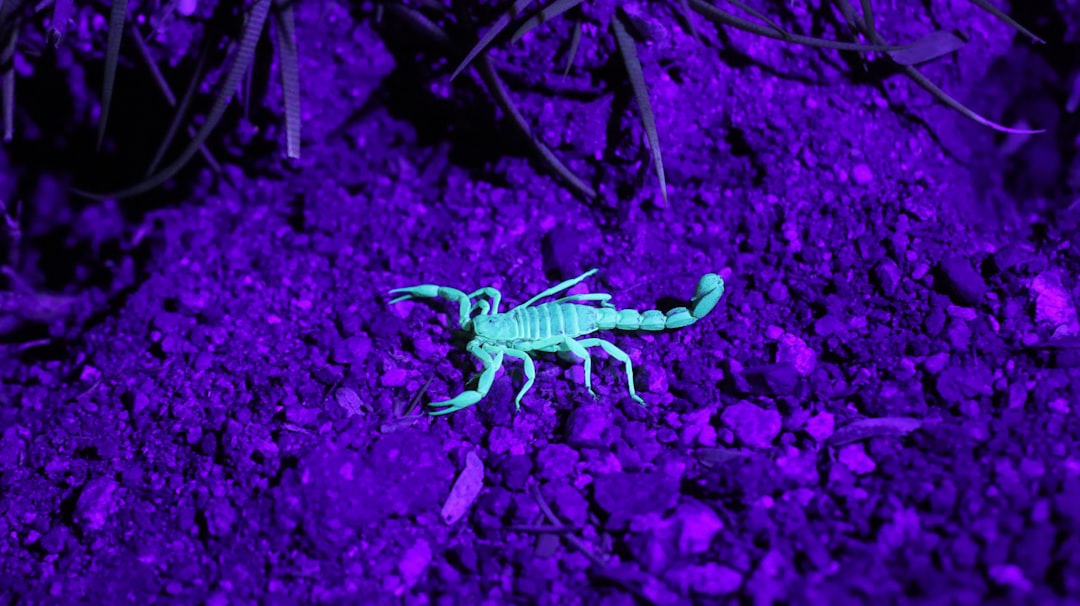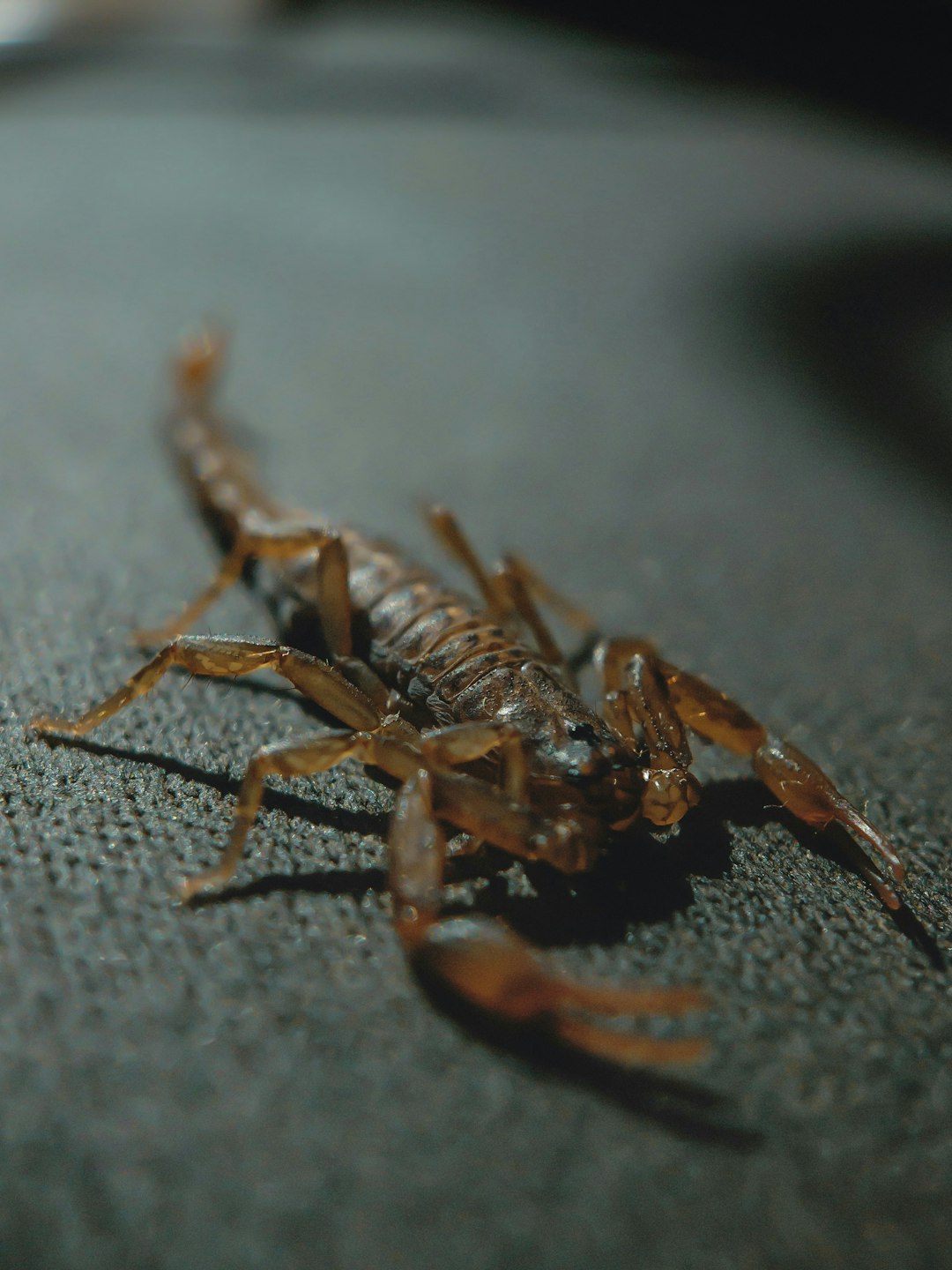Scorpion control hinges on targeted strategies that consider their nocturnal habits and preferred environments. Effective management involves exclusion by sealing building entrances, maintaining cleanliness to eliminate food sources, and removing harborage sites like woodpiles or debris. Strategic lighting and mechanical methods such as traps and vacuuming, along with a judicious application of chemicals when necessary, are key control measures. Regular inspections for early detection complement these efforts, ensuring the safety of humans and pets by managing scorpion populations effectively. It's important to use protective gear when handling scorpions and to employ non-lethal containment methods like glass jars or vacuum cleaners before releasing them at a distance. Always follow label instructions and local regulations when using pesticides, and professional pest control services can provide expert assistance in scorpion population management.
When uninvited arachnids like scorpions make their presence felt in your space, understanding effective removal techniques becomes paramount. This article delves into the intricacies of scorpion behavior, habitats, and biology to empower you with knowledge for controlling these creatures. We’ll explore how to identify common species, the environmental factors influencing their activity, and exclusion strategies to prevent future infestations. Additionally, we will outline humane, non-chemical control methods, including physical and mechanical techniques, diatomaceous earth application, and the use of traps and baits. For those considering chemical solutions, we’ll guide you on their safe and effective implementation. In certain cases, professional pest control services may be necessary. Finally, we’ll discuss post-removal strategies to maintain a scorpion-free environment, ensuring lasting control through sustainable management practices. Mastering these techniques is key to maintaining a safe and secure living or working space, effectively managing scorpion populations, and enhancing your understanding of scorpion control.
Understanding Scorpion Behavior and Habitats for Effective Control

Scorpions are arachnids known for their venomous sting, and understanding their behavior and habitats is crucial for implementing effective control measures. These creatures are nocturnal, primarily active at night when their prey, such as insects and spiders, are most active. They possess pedipalps equipped with sensory hairs that detect vibrations and chemicals from distances, which they use to locate food and navigate their environment. Scorpions prefer habitats with plenty of cover and moisture, often found in rocky areas, beneath bark, under stones, and in dark, secluded corners of structures. By recognizing these environmental preferences, scorpion control can be tailored to include exclusion methods such as sealing cracks and gaps in buildings, reducing clutter where scorpions might hide, and maintaining cleanliness to eliminate food sources. Additionally, removing harborage sites like woodpiles, debris, and rock piles near the structure can significantly reduce scorpion populations. Employing strategic lighting to minimize dark areas and using mechanical methods like traps and vacuuming can also complement chemical control when necessary, ensuring a comprehensive approach to managing scorpion infestations safely and effectively. Regular inspection and monitoring are essential components of scorpion control strategies, allowing for early detection and timely intervention before populations spike, posing a greater risk to both humans and pets.

When faced with an unwanted scorpion presence, implementing effective and safe scorpion control measures is paramount. The first line of defense in scorpion control involves exclusion techniques, where one ensures that these arachnids cannot enter a structure by sealing cracks and crevices around the foundation and windows. This proactive approach prevents scorpions from finding shelter indoors. Additionally, maintaining a clean environment by keeping clutter to a minimum and woodpiles away from the home’s exterior can significantly reduce the attractiveness of your property to scorpions. Regularly inspecting and monitoring areas where scorpions are likely to hide, such as beneath rocks or in dark, undisturbed corners, allows for early detection and prompt removal.
For actual scorpion removal, non-lethal methods are preferred, such as using a glass jar or a vacuum cleaner to contain the scorpion before releasing it at least a mile away from your residence. If physical removal is necessary, it’s important to use appropriate protective gear to avoid injury. Chemical control can also be an option, but it should be applied judiciously and in accordance with local regulations. Employing professional pest control services for scorpion control is often the most effective approach, as they have the expertise and resources to humanely and efficiently manage scorpion populations. Always remember to follow label instructions when using any pesticides and consider the safety of pets, wildlife, and people when implementing scorpion control measures.
Effective scorpion control begins with a thorough understanding of their behaviors and preferred habitats, as outlined in this article. By implementing the safe and proven techniques discussed, homeowners and pest management professionals can significantly reduce scorpion populations and mitigate the risks they pose. It is imperative to maintain a clean environment and seal entry points to prevent these arachnids from taking up residence. Regular monitoring and the strategic use of non-toxic baits or traps, as detailed herein, will aid in the long-term management of scorpion infestations. With this knowledge at hand, one can confidently take control of scorpion situations, ensuring a safer living space for all.
